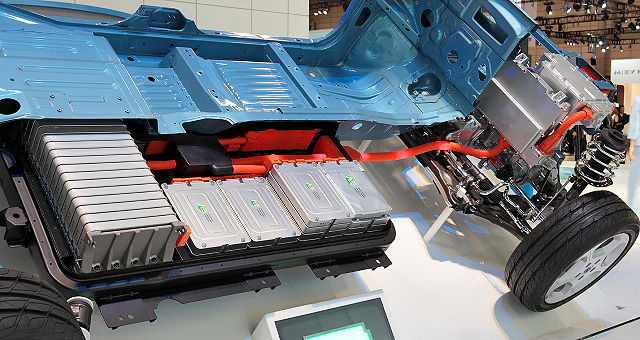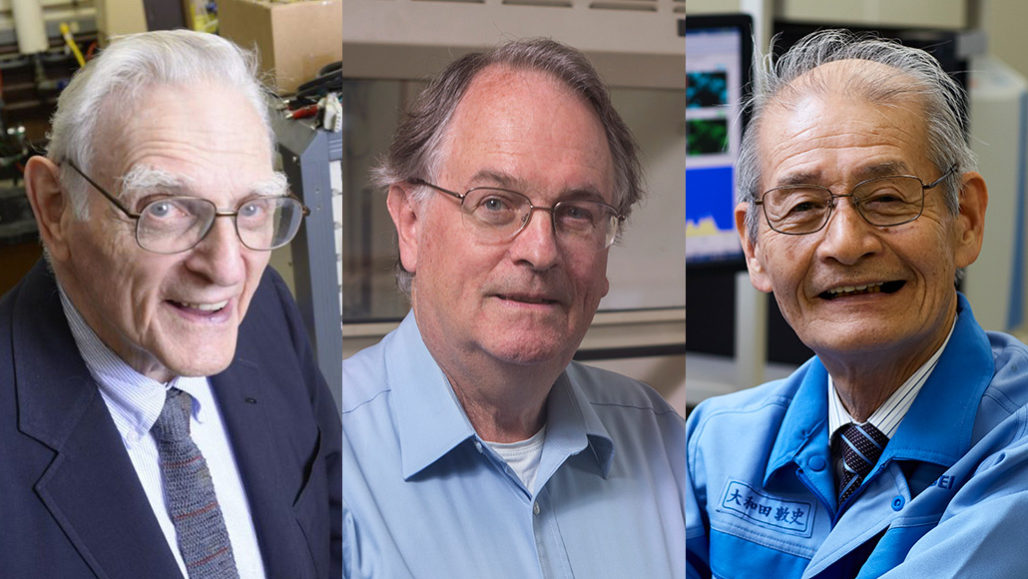 Have you ever wondered how the electronics you use every day are powered so effectively?
Have you ever wondered how the electronics you use every day are powered so effectively?
On October 9, three researchers received the Nobel Prize in Chemistry for their groundbreaking invention, the lithium-ion battery.
Stanley Whittingham, John Goodenough, and Akira Yoshino spent decades overcoming obstacles to perfect the technology we take for granted.
The three will split the prize of about $900,000 for their work of using chemistry to develop a battery with so many applications.
How Lithium-Ion Batteries Work
Every battery has three parts: an anode (negative electrode), a cathode (positive electrode), and a layer called the electrolyte which allows ions to flow between the electrodes.
This principle is key to the battery because electrons need to flow in a circuit from the negative to the positive electrodes to produce an electric current.
The development of the lithium-ion battery began in the 1970s when during the oil crisis. Whittingham, who worked for the company Exxon, was tasked with finding alternative sources of energy.
Knowing that lithium was a good anode because of its weight and its ability to easily lose electrons, Whittingham searched for a cathode that could hold lithium ions in pockets. He used titanium disulfide as a cathode and metallic lithium as an anode to make the first functional lithium-ion battery. However, because part of the anode was pure metallic lithium, a very reactive metal, the battery was prone to explode.
That’s when Goodenough entered the picture. After years of research, Goodenough realized that cobalt oxide had a similar structure to titanium disulfide and could withstand the constant insertion of lithium ions. He opened new doors with cobalt oxide, making the battery more powerful. The final step in the evolution of the lithium-ion battery was due to Yoshino, who completely removed pure lithium from the battery. He replaced it with carbon-based petroleum coke in the anode to house the ions successfully.
As a result of their research, tinkering, and evolution, we have a lightweight, powerful, and rechargeable battery with a long life.
Rechargeable Batteries
 Today, the typical cathode in a lithium-ion battery is lithium cobalt oxide and the anode is graphite.
Today, the typical cathode in a lithium-ion battery is lithium cobalt oxide and the anode is graphite.
When you charge your devices, electrons enter the battery and the lithium atoms intercept them in the anode, where they settle into the carbon layers of the graphite.
On the other hand, when the device is in use, the lithium ions travel from the graphite anode through the electrolyte to the cathode. Once all the lithium ions reach the cathode, the battery is out of power. This movement of electrons provides the current to power our electronics.
Lithium-ion batteries find applications in electronics, electric vehicles, power tools, medicine, space, and renewable energy grids. These batteries can store solar or wind power that is generated during peak times for use at a later time when there is demand. Lithium-ion batteries have increased reliability and reduce our dependence on central power as well as on fossil fuels, a key driver of climate change.
As our knowledge of chemistry expands, maybe someday we will have even more powerful batteries and a future of clean power -- not fossil fuels and global warming.
Sources: NY Times. Nobelprize.org







